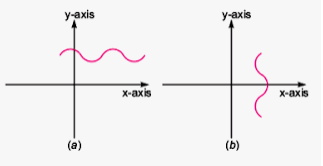Show that , given by : is both one-one and onto.Solution in Punjabi
Step by step video & image solution for Show that f : NrarrN , given by : f(x) = {(x+1,,if x is odd,,),(x-1,,if x is even,,):} is both one-one and onto. by Maths experts to help you in doubts & scoring excellent marks in Class 12 exams.
Updated on:21/07/2023Topper's Solved these Questions
- RELATIONS AND FUNCTIONBOOK - MODERN PUBLICATIONCHAPTER - RELATIONS AND FUNCTIONEXERCISE - EXAMPLE
212 Videos
- PROBABILITYBOOK - MODERN PUBLICATIONCHAPTER - PROBABILITYEXERCISE - EXERCISE
543 Videos
- RELATIONS AND FUNCTIONSBOOK - MODERN PUBLICATIONCHAPTER - RELATIONS AND FUNCTIONSEXERCISE - EXAMPLE
13 Videos
Similar Questions
Which one of the following graph represents the function of x? Why?

View SolutionCompute P(A∣B),if P(B)=0.5 and P(A∩B)=0.32
View SolutionState the reason for the relation R, in the set {1,2,3} given by R= {(1,2), (2, 1), not to be transitive.
View Solutionf(x)=(log(sec x+tan x)^(3) then f(x) is one one,onto,even or odd
View SolutionIf f:N→N is given by f(x)={x+12ifx is oddx2ifx is even and g:N→Nisgivenbyg(x)=x-(-1)^x,thenf(g(x)) is (a) one one and onto (b) may one and onto (c) one one and not onto (d) neither one-one onto
View SolutionShow that the function f:N→N defined by
f(x)={x−1 if x is evenx+1 if xis odd}
is one-one and onto.
View SolutionLet N be the set of natural numbers: show that the mapping fN→N given by,
f(x)=⎧⎨⎩(x)+12when x is oddx2 when x is even
is many -one onto.
View SolutionShow that f:N→N given by
f(x)={x+1, if x is oddx−1, if x is even
is both one-one and onto.
View SolutionShow that f:N→N, given by
x+1,if x is odd,
f(x)=x−1, if x is even
is both one-one and onto.
View SolutionShow that f:N→N, given by
x+1,if x is odd,
f(x)=x−1, if x is even
is both one-one and onto.
View SolutionShow that f:N→N, given by
x+1,if x is odd,
f(x)=x−1, if x is even
is both one-one and onto.
View SolutionShow that f:N→N, given by
f(x)=x+1, if x is odd,
f(x)=x−1, if x is even
is both one-one and onto.
View Solutionf: N→N, where f(x)=x−(−1)x. Then f is: (a)one-one and into (b)many-one and into (c)one-one and onto (d)many-one and onto
View SolutionLet A={−1, 0, 1} and f={(x, x2):x∈A} . Show that f:A→A is neither one-one nor onto.
View SolutionIf f:N→N is given by f(x)={x+12ifx is oddx2ifx is even and g:N→Nisgivenbyg(x)=x-(-1)^x,thenf(g(x)) is (a) one one and onto (b) many one and onto (c) one one and not onto (d) neither one-one onto
View SolutionShow that f:N→N given by : f(x)={x+1ifxisoddx−1ifxiseven is both one-one and onto.
View Solution
